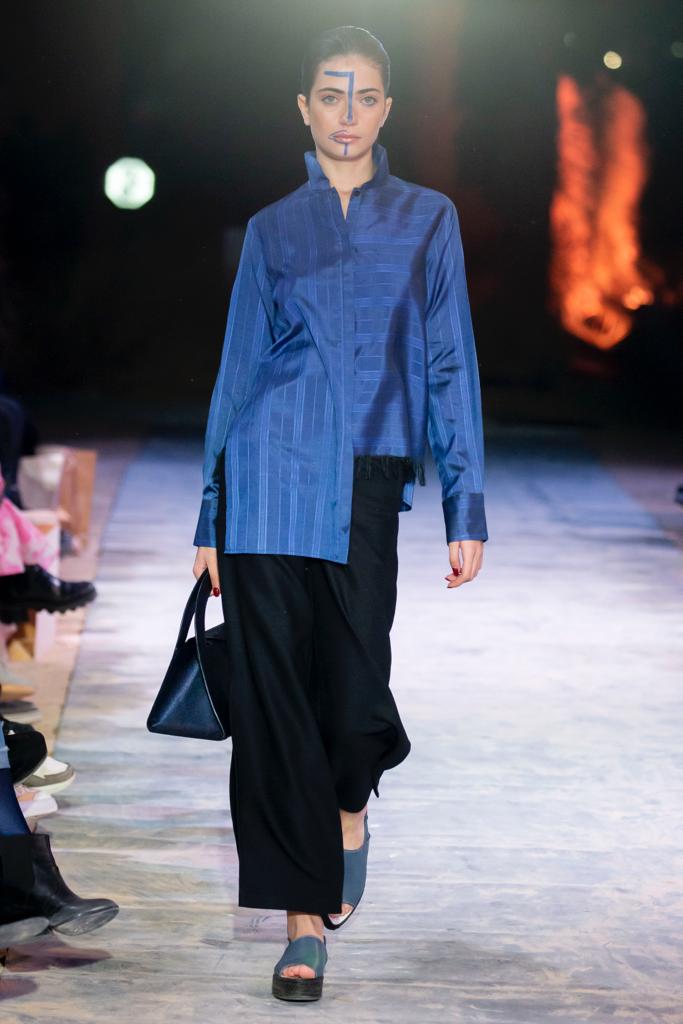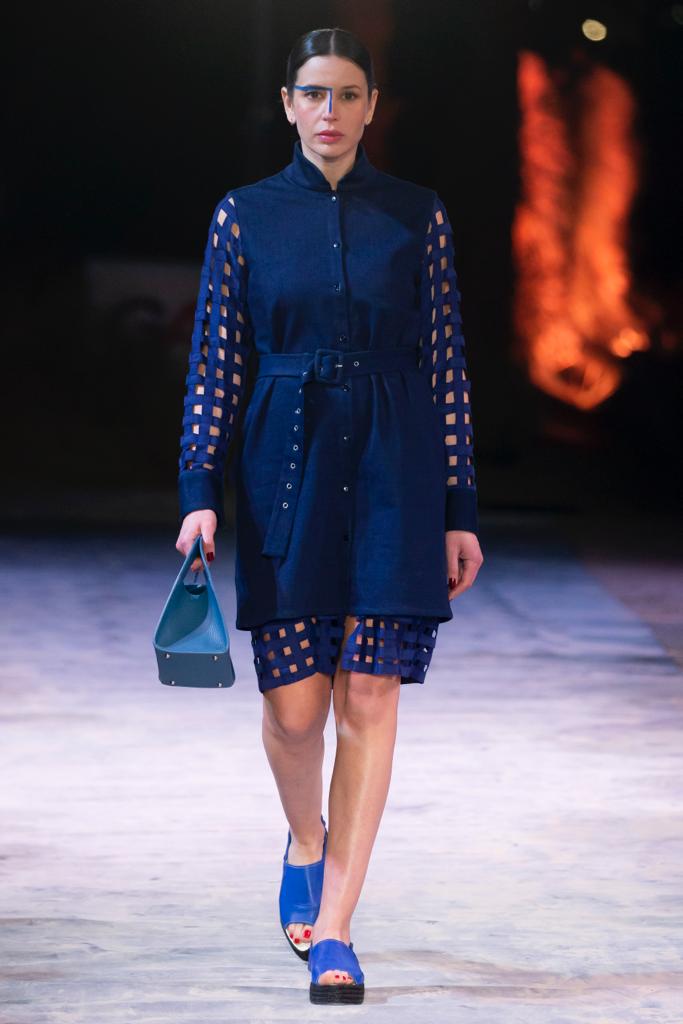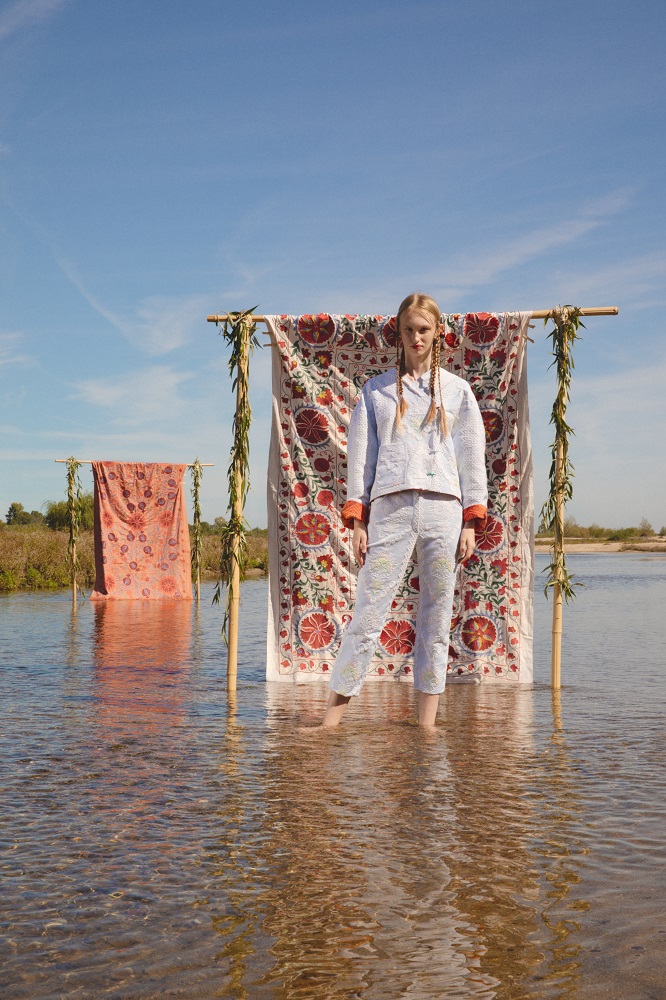texto de João Reis Moreira
fotografia Jeremy LeConte/Pixel Formula : Discover Tunisia
Our collaborator João Reis Moreira was in Fashion Week Tunis recently and interviewed Anissa Aida
You showed your last collection at Fashion Week Tunis. How important it is to have such a big platform supporting Tunisian Designers?
Fashion Week Tunis is the only event of that kind in Tunisia, that gathers as many fashion designers, models, photographers, make-up artists… This platform allows to connect with international journalists. It is also highly covered by Tunisian media: national tv, radio and magazines. In the first years of my brand’s launch, I was living abroad (in New York) and I had the opportunity to show my collections abroad in London Fashion Week, Paris, Berlin and as well as Harbin Fashion Week in China! As I moved back to Tunisia, I felt the need to participate in Fashion Week Tunis both for my brand’s exposure as well as to support this action that contributes to unify a fashion industry in Tunisia. The first edition I participated in was in May 2019. It took place in the amphitheater of Carthage. Even though there still are problems with the organization of the event, I believe it is a very important event that brings together Tunisia’s fashion industry.

Tell us about your experience as a woman in this industry and as a Tunisian fashion designer
I have to admit that I have never faced any particular problem due to the fact that I am a woman. I have even received assistance and support. In 2020, I was selected as the “woman entrepreneur of the year” by Le Manager magazine. They provided me with some funds as well as mentorship. I am often called to participate in actions that support women entrepreneurship: We4Dev (Women for Development), l’Institut Français, Esprit Business School, College LaSalle… to name a few.
On the other hand, being a fashion designer in Tunisia can be extremely challenging from sourcing materials to producing and eventually making sales!

What are the pros and cons of working in Tunisia as a fashion designer?Tunisia is no longer a country producing textiles, apart from a few remaining artisans’ hand weaving silk, cotton and linen. To this point, my aim is to support artisanal craftsmanship and preserve those hand weaved quality fabrics. The manufacturing factories are mainly focused on working with international brands and producing large quantities, either for fast fashion groups or for famous retailers and brands. They are not tailored to fit the needs of young emerging designers. Concerning sales, locally it is difficult as local concept stores don’t buy the collections wholesale but they do consignments with the brands.
The only solution for designers is to open their own retail space. It is actually what I just did, I opened my own showroom in the Mutuelleville neighborhood of Tunis that is both my work space and where I receive customers, by appointments. And to make international sales, there are also huge difficulties such as our currency not being convertible, no agreement with Paypal, high shipping rates, problems with customs… Even to run an ecommerce website becomes very challenging!

Tell us about the FW22 collection you recently showed at Fashion Week Tunis?
Recently I showed my Fall Winter 2021-2022 collection at Fashion Week Tunis. My collections are melding together references from Tunisia and Japan, which fascinates me. I am inspired by traditional garments and my aim is to give them a modern spin. This season for example I re-interpreted many Tunisian clothing staples such as the Dengri ( a workwear jacket with Chinese buttons), the Kadroune (wool coat worn by men of Djerba, an island in the south of Tunisia), Barnous, Sarouel pants, etc… My Japanese inspirations can be seen through the collection through my variations of kimono and keikogi (uniform worn for training in Japanese martial arts) shapes and through the work on volumes.

Do you have a favorite piece from the collection?My favorite piece of this collection is the Barnous cape. Traditionally, a Barnous is a long cloak of woolen fabric worn by Berber and other Maghrebi men. It features a pointed hood. My Fall Winter 2021-22 Barnous is made of light hand-woven wool. The length of it has been shortened compared to traditional ones, and the hood has been exaggerated. I also played with the direction of the stripes to create an interesting visual effect.

What is your starting point, and how would you describe your creative process when working on a collection?
My creative process starts with a lot of research, I gather information in books and collect images from newspapers and magazines. I start collaging them and doodling on top of them. Once I have the research aspect done, I start making shapes out of it. Sometimes by making shapes, my whole design ideas change and I learn to go with the flow and do what feels right.

Looking ahead, what are your plans going forward?
On a creative point of view my upcoming plans are to develop collaborations with more artisans, to incorporate new techniques in my collections. I am currently working with a master embroiderer from Mahdia, Tunis. This region is really known for its textiles and embroidery traditions.
On a business point of view, my aim going forward is to increase my direct to customer sales, both through the showroom that I recently opened 22 rue du 1er juin in Mutuelleville, Tunis, and internationally by doing pop ups in different cities as well as by working on my ecommerce website to generate more traffic.


